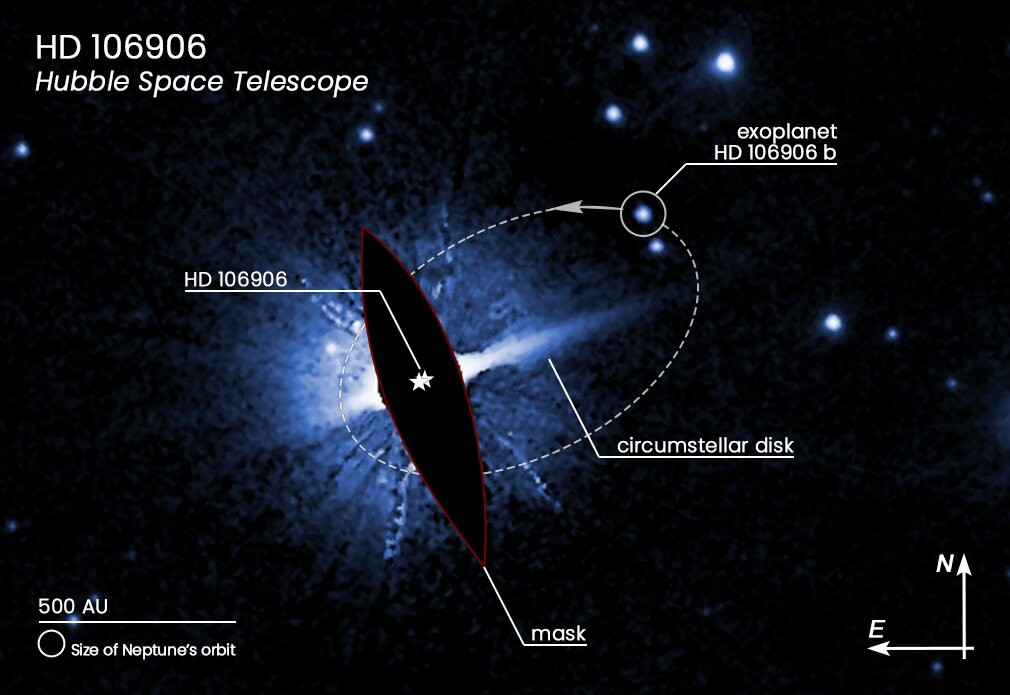Analyzing a world in an unlikely orbit around a pair of stars gives us clues to the famous, but still hypothetical "planet 9 .
In 2015, a team of astronomers noticed strange gravitational effects on several objects in the Kuiper belt that wraps our star beyond the orbit of Neptune. To explain this tension, some then imagined the presence of a body between five and ten times more massive that the Earth evolves in an eccentric orbit and makes a complete revolution of our star in 20,000 years about. This very dim object has since been dubbed "Planet 9".
Since then, searches to unearth this hypothetical world have been in vain. A strange planet, recently characterized by the Hubble telescope, could nevertheless give us some additional clues.
In The Astrophysical Journal , a team from the University of California (Berkeley) details the analysis of an exoplanet found around a binary system 336 light years away of the earth. The presence of this world named HD 106906 b was discovered in 2013. However, since then, not much more has been known about it. Also, astronomers have relied on Hubble to study it in more detail in recent years.
What characterizes it? This world eleven times more massive than Jupiter evolves in a distant orbit, at nearly 6.8 billion kilometers of its pair of stars (about 730 times the Earth-Sun distance). In addition, this planet is evolving even beyond the still visible disc of debris surrounding the pair of stars. This system is indeed still very young, only fifteen million years old . For comparison, our Solar System was formed about 4.6 billion years ago .
Given this incredible distance, this planet wraps its two stars in approximately 15,000 years . Finally, astronomers discovered that HD 106906 b is in an elongated and very misaligned orbit with the debris disk, hence the researchers' comparison of this object with the hypothetical "planet "9".

So how did this exoplanet get here? The prevailing theory suggests that it formed much closer to its stars , about three times the Earth-Sun distance. The presence of the disc of gas and dust still present then led it to migrate inwards , thus approaching the pair of stars. Then, the inherent gravitational effects of these two stars spinning around each other thrown it into an eccentric orbit . According to astronomers, a star passing not far from the system finally made it possible to stabilize its orbit , preventing it from exiting its home system.
According to the study authors, this scenario may be similar in some ways to what may have caused the hypothetical "planet 9" to end up in the outer reaches of our own system. This world could indeed have formed in the inner regions of the sun, before being expelled by interactions with Jupiter. Passing stars could then have stabilized its orbit, ultimately preventing it from reaching interstellar space.
"It's like we have a time machine and can see what might have happened when our young Solar System was dynamically active and that everything was still shuffled and rearranged “, explains Robert De Rosa of the European Southern Observatory in Santiago, Chile.
The latter also proposes that this planet be targeted by the future James Webb Telescope, which is scheduled to be launched next year with the aim of characterizing it with even more precision.